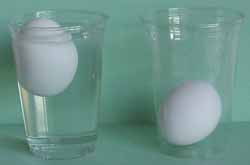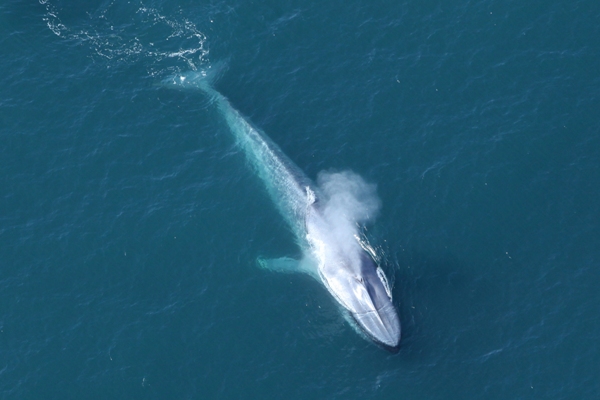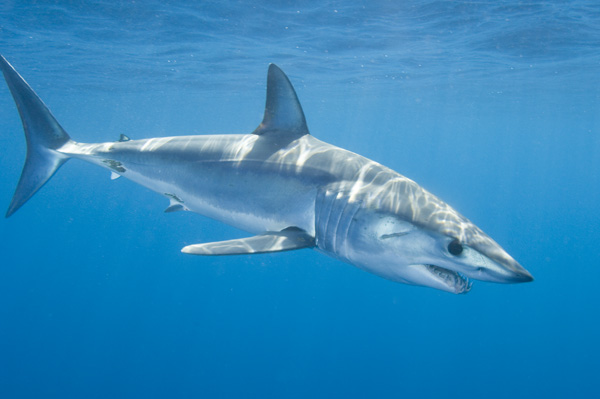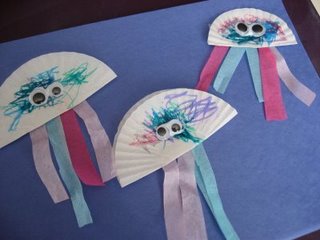CIRCLE TIME
Most of our Earth is covered by oceans! That is a LOT of water. There are 5 main oceans, the Pacific, Indian, Atlantic, Arctic, and Southern. Review the image below and count the oceans together. Point to where you are right now in order to give the kids a little perspective. Also point out the land and the sea.
Ocean water contains salt, so it is harmful to your body to drink it. Many very special animals live in the ocean. Some breathe air, like us, and some "breathe" under water. There are also many special plants that live in the ocean. We are going to learn about some of these animals and plants during our lessons this week.
LETTER: W w for Water or Whale
http://www.first-school.ws/t/alpha3_whale_b.htm
Talk about the letter W. Pronounce some words that begin with W such as Water, Waves, Whale, Walrus, etc.
Trace the letter on the page with fingers then with a crayon. Color the Whale picture.
READING
ReadingBear: learn the short u sounds - http://www.readingbear.org/
Starfall: work on ug sounds - http://www.starfall.com/n/level-a/learn-to-read/load.htm?f
Our fun reading activity this week will use more fishy forms. Again, make them paper, foam, felt, whatever! Make 1 fish with ug on it. Then make fish with B, D, H, J, M, R, and T on them. As with the past activities, pronounce ug together. Show them how to sound it out. Then place the B fish in front of the ug fish. See if they can read that! B-ug. Keep changing out the letters and form and read all of the words!
(there are phonetic fish out there that you can buy, if that works better for you!)
SCIENCE
Difference Between Salt & Fresh Water
You can make your own sea water for this activity. Use bottled water and add sea salt (much better than table salt). The ratio is 1-2 cups per gallon. Real sea water has many trace elements in it that you will not match with this recipe, but it will work for this activity.
Place the sea water in a bucket. Also provide a bucket of fresh water.
TASTE TEST:
Allow the children to dip their fingers in the fresh water and taste it. Tastes like the water they drink every day, right? Next allow them to try again with the sea water. It tastes much different, doesn't it? For those who have been to the beach recently, they may recognize the taste.
FLOAT TEST:
You will need a fresh egg for this test. Place the egg in the fresh water. It should sink to the bottom of the bucket. Now place the same egg into the sea water. It will float! Sea water has salt in it which allows objects to float more easily. Again, those who have been to the beach may have noticed that they did float better in the water, rather than in a regular swimming pool.
FREEZE EXPERIMENT:
Place some of the fresh water in a smaller container and do the same with some of the sea water. We want this to freeze pretty quickly (or not freeze!) so they will see results fast! Check back in an hour or so to see what has happened. They will find that the fresh water has frozen but the sea water is very cold, but not totally frozen. The salt in the sea water keeps it from freezing as quickly.
DISCUSSION & GAME
Animals and Plants in the Ocean
Print the Ocean Animals and Plants flashcards HERE and cut out. Review these with the kids. Talk about the many different animals they are looking at and ask if they can see some things that make them all the same. What kinds of things make them different from animals on the land? In the discussion, talk about which ones breathe air and which ones breathe under water. Separate the cards into the 2 piles.
Talk about how some animals in the Ocean swim and some walk on the ocean floor. Separate these cards out also.
Many of the "plants" in the Ocean are actually tiny animals who group together to make huge reefs. These animals are called Coral. Separate the coral pictures out. Look at them and discuss the different shapes, colors and sizes they are.
Once the discussion has ended, you can play the Game! Turn the piles of cards over so you can't see the pictures. Have each child pull a card from the "plants" pile. Have them tell everyone a fact about their plant they remember from the discussion.
Next, pull from the Swim or Walk piles. Have the kids act out how their animal gets around.
Finally, pull from the Air Breathers and Underwater Breathers. Have everyone hold their breath as long as they can. We breathe air, so we can only hold our breath for a short time before we HAVE to breathe again. This is the same as the Ocean Air Breathers. They can hold their breath much longer than people can, but they still have to come up out of the water to breathe. The underwater breathers can stay underwater forever! They get their air through the water by breathing through their Gills.
MATH
Fishing For Numbers
This time we are going to fish for fish cutouts with numbers written on them! Make some simple fish shapes on some colorful cardstock or craft foam. You can use the template below if you wish. Cut them out and write the numbers 1-10 on one side and draw dots corresponding to the numbers on the other side. For example, one side will say 1 and the other side will have 1 dot. For best results, laminate them in they are paper. Then attach paperclips to them. You can use the same fishing pole as before, but this time add a magnet to it instead of a paper clip. Place all the number fish into a bucket or other container the kids can fish from.
Fish Template
This time we are going to fish for fish cutouts with numbers written on them! Make some simple fish shapes on some colorful cardstock or craft foam. You can use the template below if you wish. Cut them out and write the numbers 1-10 on one side and draw dots corresponding to the numbers on the other side. For example, one side will say 1 and the other side will have 1 dot. For best results, laminate them in they are paper. Then attach paperclips to them. You can use the same fishing pole as before, but this time add a magnet to it instead of a paper clip. Place all the number fish into a bucket or other container the kids can fish from.
Fish Template
Allow each child to take a turn fishing for a number. Once they have pulled one up, they should say the number and then count the dots. Place the fish on the table. The next child will do the same and so on until all the numbers have been caught. Once they have all the numbers on the table, they should work together to place them in the correct order.
Fish In The Sea Counting Game
Use the bottom part of an egg carton. Write the numbers 1-12 in the cups of the carton. Provide the kids with Goldfish crackers and ask them to place the number of crackers as listed on the cup of the carton. Count them out loud together as they do it to make it a fun group activity!
SENSORY ACTIVITY
Ocean in a Bottle
Materials Needed:
Clear Bottle
Canola Oil
Water
Blue Food Color
Fill the bottle with the oil to about 1/3 full. Finish filling the bottle with water. Add the food coloring and secure the lid. You can add other items, such as sand, shells, cork boats, etc, as desired.
Allow the kids to explore what happens when they rock the bottle back and forth. Some kids will be absolutely mesmerized by the bottle. (This can be used as a time out/ chill out tool) Talk about how there are waves in the ocean and this bottle illustrates how they rock and roll!
COMMUNITY
Marine Biologists
Marine Biologists are scientists who study all about the ocean and the plants and animals in it. They are very busy because there are still many areas of the ocean that have not been explored yet! Since the ocean is so big and also very difficult to visit, it takes a very long time to explore the whole thing. People can't breathe under the water. We must wear a special mask and a tank full of air with us when visiting the areas under the sea. The mask helps us breathe air while underwater.
SENSORY ACTIVITY
Ocean in a Bottle
Materials Needed:
Clear Bottle
Canola Oil
Water
Blue Food Color
Fill the bottle with the oil to about 1/3 full. Finish filling the bottle with water. Add the food coloring and secure the lid. You can add other items, such as sand, shells, cork boats, etc, as desired.
Allow the kids to explore what happens when they rock the bottle back and forth. Some kids will be absolutely mesmerized by the bottle. (This can be used as a time out/ chill out tool) Talk about how there are waves in the ocean and this bottle illustrates how they rock and roll!
COMMUNITY
Marine Biologists
Marine Biologists are scientists who study all about the ocean and the plants and animals in it. They are very busy because there are still many areas of the ocean that have not been explored yet! Since the ocean is so big and also very difficult to visit, it takes a very long time to explore the whole thing. People can't breathe under the water. We must wear a special mask and a tank full of air with us when visiting the areas under the sea. The mask helps us breathe air while underwater.
ART/CRAFT
Craft - Jellyfish
You will need:
White Paper Plates
Different Colored Streamers
Crayons
Googly Eyes
Glue
Different Colored Streamers
Crayons
Googly Eyes
Glue
Fold each paper plate in half and tape together. Have the kids color their jellyfish however they want! Glue their eyes on. Glue lengths of streamers to the back of the jellyfish. Done!
Hang these from the ceiling! They turn out so cute...
Hang these from the ceiling! They turn out so cute...
Art - Sand Pictures
This is messy and I advise that you do it outside!
You need:
Paper
Blue Paint
Glue (white is best)
Sand
Shells
Various sea creature stickers
Other decorations, be creative!
The kiddos will need to paint part of their picture blue for the ocean. Then find out where they want their beach and place glue on the page. Give them a little bowl of sand and a spoon and let them sprinkle the sand onto the glue. Once their beach is complete, allow them to add shells and sea creatures as desired.
These turn out pretty cool!
BOOKS
National Geographic Kids First Big Book of the Ocean is an adorable animal reference that includes the sea's high-interest animals, such as dolphins, sharks, sea otters, and penguins, and introduces kids to some of its lesser-known creatures. More than 100 charming animal photos illustrate the profiles, with facts about the creatures' sizes, diets, homes, and more. This book will quickly become a favorite at storytime, bedtime, and any other time.
"Teachers and parents, take note: this book is already a classic. Two geniuses--author and illustrator--came into perfect alignment to create this book. The author has kids thinking it is entertainment while adults think it is a great lesson about the ocean. The genius of the illustrator is obvious. With painstaking detail each illustration is created entirely of polymer clay, then photographed, creating a 3-D impression of tremendous vitality. Kids will sing, clap, and count their way among pufferfish that puff, gruntfish that grunt and seahorses that flutter, and begin to appreciate life in the ocean. And the art will inspire many a project. Plus there are several pages of extension ideas for curriculum and art projects as well as resources on the web and elsewhere."
MUSIC
COOKING
Ocean Cups
You can make the blue Jello yourself or get the single serve cups. Have the kids add some Swedish Fish or the little Sharks fruit snacks!








.JPG)







Thank you for your very organized ocean unit. We are beginning our ocean study this month. I look forward to implementing many of these ideas.
ReplyDeleteThanks for the ideas. We used the ocean bottle and the egg experiment.
ReplyDeleteI am so glad you were able to use these! Enjoy
DeleteHi for the water in the bottle how much canola oil do i need to purchase to make sure i have enough please ?
ReplyDeleteI have found that if you fill the bottle half way with oil and then fill the rest up with water it works well. Be sure to fill the water as close to the top as you can. The less air inside the better! I hope this helps
Delete